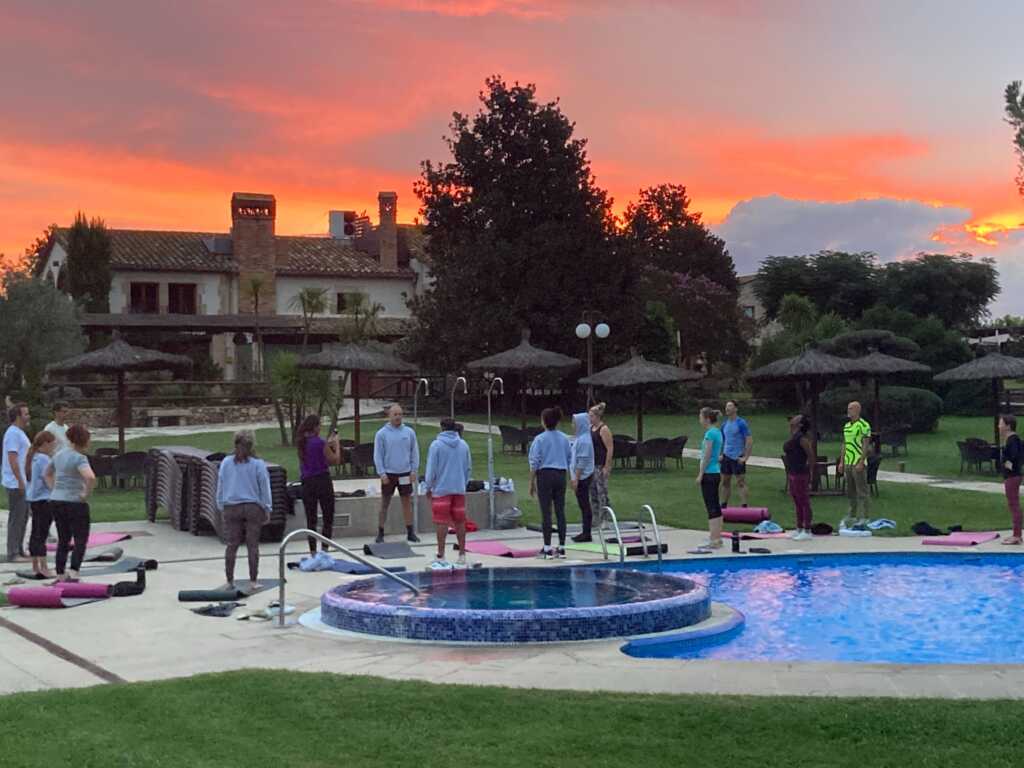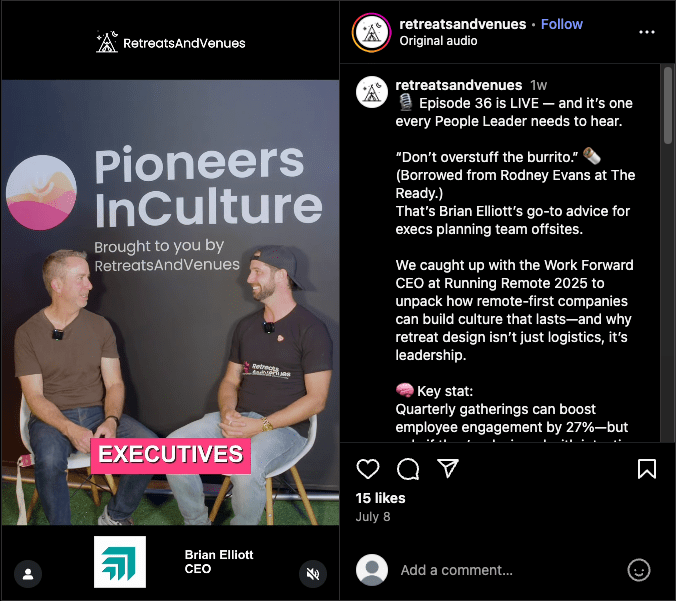How to Avoid Retreat Planning Mistakes with Work Forward
Planning a company retreat shouldn’t feel like a gamble—but for many teams navigating the remScote-first world, it often does. In Episode 36 of Pioneers in Culture, host Cory Sivell connects with Brian Elliott, CEO of Work Forward, to unpack exactly what goes wrong—and how to get it right.

Brian is a trusted advisor to executives adapting to the future of work. From flexible policies to generative AI and generational shifts, he’s helped countless leaders align strategy with the human side of work. One of the most overlooked tools in the modern leader’s toolkit? Well-designed corporate retreats.
The Mistake Most Teams Make
While speaking at Running Remote 2025, Brian shared a story about a C-suite team navigating a remote-first shift. They had strategy decks and goals—but when asked how often they brought their team together, their answer was: rarely. And their employee engagement scores were dropping fast.
According to Brian—and backed by corporate retreat statistics—this isn’t a surprise. Getting teams together—even once per quarter—can boost engagement by 27%, with effects that last 4 to 5 months. Not bad for a 3-day investment.
Why Most Retreats Fall Flat
You’ve seen it before: endless slides in a basement boardroom, followed by team burnout. Brian calls it the classic mistake: “death by PowerPoint.”
Instead of cramming strategy into a weekend, his advice is simple: don’t overstuff the burrito.
“You’re building the muscle to allow people to execute that strategy downstream—don’t try to get all of your business done all at once.”
This insight is essential for anyone involved in corporate retreat planning. Leaders should focus on one key message, align the team around it, and blend in the elements that build trust—shared meals, outdoor activities, and unstructured downtime.
These experiences are the heart of successful leadership retreats, allowing time for connection, creativity, and strategy to unfold naturally.
The ROI of Real Connection

Want to prove a retreat’s value? Track engagement scores pre- and post-event. Brian notes that teams who gather quarterly show higher satisfaction with their role, manager, and company. The emotional and strategic impact of a great offsite isn’t just felt—it’s measurable. This is the ROI of corporate retreats that forward-thinking leaders are tracking—and it’s what sets impactful gatherings apart.
Many corporate travel companies and HR teams overlook this emotional component, yet it’s the most enduring.
Top Retreat Activities That Actually Work
Whether you’re planning an executive offsite, a team reset, or exploring company offsite ideas, consider:
- Strategy hikes – Fresh air and informal convos spark better thinking than boardrooms.
- Group dinners – Meals create space for real connection (and memorable conversations).
- Local workshops – Tap into local creativity and shared learning experiences.
These ideas are especially effective when working within realistic company retreat budgets—you don’t need luxury to create meaning.
Why Corporate Retreats Are Important
More than perks, corporate retreat locations serve as a backdrop for teams to step away from the screen and re-engage with each other—and their purpose. The best retreats are not overloaded; they’re focused, human-centered, and designed to ripple impact well beyond the final session.
Final Takeaway
A retreat isn’t just a break from work. Done right, it becomes a launchpad for clarity, connection, and culture.
🎧 Listen to the full episode of Pioneers in Culture to hear how Brian Elliott and Work Forward are helping companies avoid retreat regret—and design experiences that actually move the needle.
